Angora Goat
- February 6, 2024
- 0 comment
The Angora Goat, known for its exquisite fleece, is a breed of domesticated goats originally hailing from the Ankara region of Turkey, which was historically known as Angora. These charming animals have a storied past, dating back to ancient times when they were cherished for their incredibly soft and lustrous fleece. Angora goats come in two primary breeds: the Turkish Angora and the South African Angora. They have distinctive features, including a robust frame, long ears, and a prominent Roman nose, but their most striking attribute is their long, silky fleece that varies in color from white to shades of gray and brown.
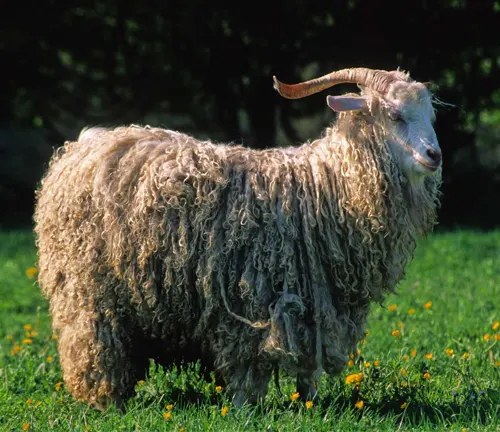
Renowned for the fine fiber they produce, called mohair, Angora goats play a vital role in the textile industry, providing a luxurious material used in crafting high-end clothing and accessories. Caring for Angora goats requires special attention, as they are sensitive to weather conditions and necessitate regular grooming and shearing. Sustainability and ethical farming practices are becoming increasingly important in the industry, ensuring the well-being of these remarkable animals and the preservation of their habitats. Angora goats remain a symbol of luxury and sustainability in the world of textiles, admired for their unique contribution to the fashion world.
| Specification | Description |
|---|---|
| Origin | Ankara region of Turkey (historically known as Angora) |
| Primary Breeds | Turkish Angora and South African Angora |
| Size | Medium-sized with a sturdy frame |
| Ears | Long ears that hang close to the head |
| Nose | Prominent Roman nose |
| Fleece Color | White, gray, and brown variations |
| Fleece Quality | Known for producing mohair, one of the softest natural fibers |
| Care Requirements | Sensitive to extreme weather, regular grooming, and shearing |
| Textile Industry Role | Provides mohair used in luxury clothing and accessories |
| Sustainability | Ethical farming practices are crucial for their well-being and habitat preservation |
A Fluffy Wonder of the Animal Kingdom
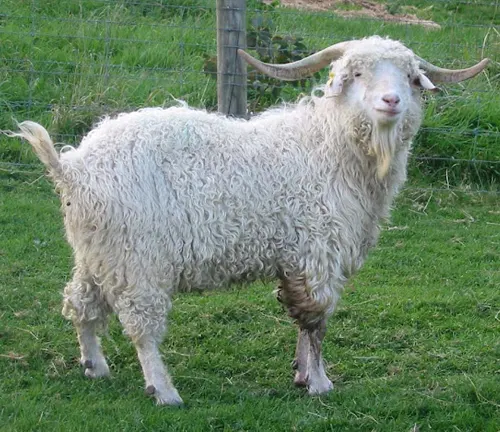
Angora goats are captivating creatures that have garnered attention for their luxurious fleece and unique appearance. In this article, we’ll delve into the fascinating world of Angora goats, exploring their history, characteristics, care, and their contribution to the textile industry.
The Origins of Angora Goats
The origins of Angora goats can be traced back to the Ankara region of Turkey, historically known as Angora. These goats have a rich and ancient history in this region, where they were highly regarded for their exceptionally soft and lustrous fleece. Over time, their reputation spread, and they became prized possessions in various cultures around the world. The name “Angora” itself is a nod to their Turkish roots, as it pays homage to their place of origin. Today, Angora goats are raised in different parts of the world, but their historical ties to Turkey remain an essential part of their heritage.
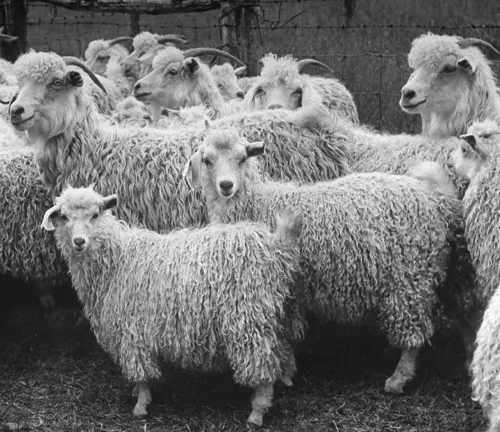
Anatomy and Characteristics
Angora goats are medium-sized animals with distinct features. They have a sturdy frame, long ears that hang close to their heads, and a prominent Roman nose. Their most prominent feature, of course, is their long and silky fleece, which can vary in color from white to shades of gray and brown.
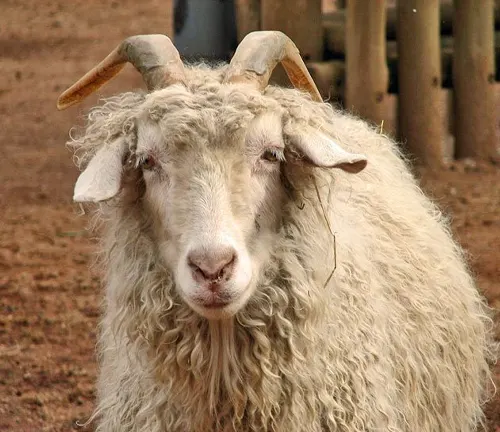
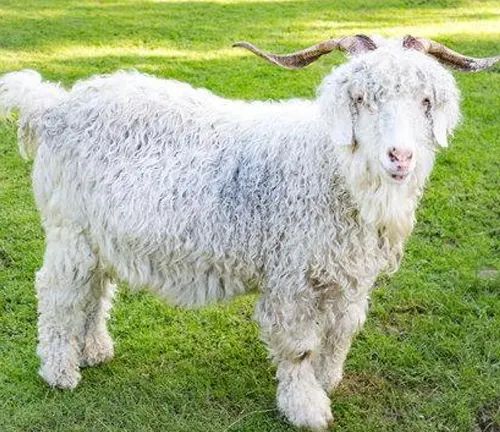
- Silky Fleece: Angora Goats are renowned for their long, silky fleece, known as mohair. It is one of the softest natural fibers globally, prized for its luxurious feel and sheen.
- Long, Pendulous Ears: These goats are easily recognizable by their long, pendulous ears that hang close to their heads, adding to their distinctive and charming appearance.
- Prominent Roman Nose: Angora Goats typically have a prominent Roman nose, which is slightly arched and contributes to their unique facial features.
- Medium-Sized Build: They have a medium-sized, sturdy frame that supports their heavy fleece. Their physique is well-proportioned and adapted to their environment.
- Variety of Colors: Angora Goat fleece comes in a variety of colors, including white, gray, and shades of brown. This diversity in fleece color adds to their visual appeal and versatility in the textile industry.
The Softest Fiber in the World
The softest fiber in the world obtained from Angora Goats is known as “mohair.” Mohair is renowned for its exceptional softness, making it one of the softest and most luxurious natural fibers globally. This silky and lustrous fiber is highly prized in the textile industry for its unmatched comfort and quality, making it a preferred choice for crafting high-end clothing, accessories, and textiles.

Caring for Angora Goats
Raising Angora goats requires special attention and care. These animals are sensitive to extreme weather conditions and should be provided with shelter. Regular grooming and shearing are essential to maintain their fleece quality.
- Shelter: Provide suitable shelter to protect Angora Goats from extreme weather conditions. A well-ventilated barn or shed is essential, especially during harsh winters or scorching summers.
- Fencing: Install secure fencing to keep them safe from predators and to prevent them from escaping. Angora Goats are known for their curiosity and may attempt to explore beyond their enclosure.
- Nutrition: Ensure a balanced diet rich in fiber, protein, vitamins, and minerals. Grazing on high-quality pasture is ideal, supplemented with hay and mineral supplements as needed.
- Fresh Water: Access to clean, fresh water is essential for their health and hydration. Regularly check water sources to ensure they remain uncontaminated.


- Grooming: Regular grooming is crucial to prevent matting and maintain the quality of their mohair fleece. This includes brushing to remove debris and keeping the fleece clean.
- Shearing: Angora Goats should be sheared approximately every six months to harvest their mohair. Professional shearers are often hired to ensure the process is done safely and efficiently.
- Hoof Care: Regularly trim their hooves to prevent overgrowth and potential hoof-related issues. Proper hoof care is essential for their mobility and comfort.
- Health Monitoring: Conduct regular health checks and consult with a veterinarian as needed. Monitor for signs of illness, parasites, and other health concerns.
- Breeding Management: If involved in breeding, carefully manage the breeding program to ensure the health and vitality of the offspring.
- Ethical Practices: Adhere to ethical and sustainable farming practices, emphasizing humane treatment and responsible shearing methods to promote the well-being of the goats and the environment.
- Environmental Considerations: Be mindful of the environmental impact of Angora Goat farming, including land management and waste disposal.
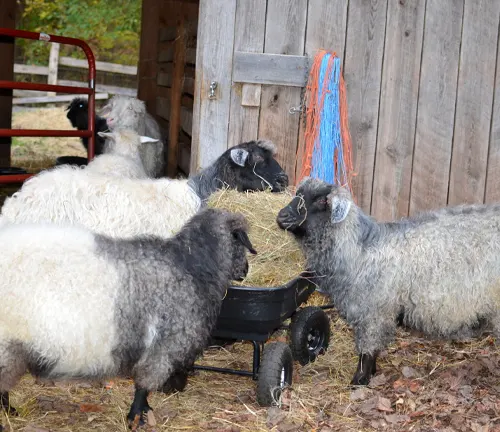
The Role in the Textile Industry
The mohair obtained from Angora goats is highly prized in the textile industry. It is used to create a wide range of products, including sweaters, scarves, blankets, and upholstery. The natural luster and durability of mohair make it a preferred choice for many designers and manufacturers.
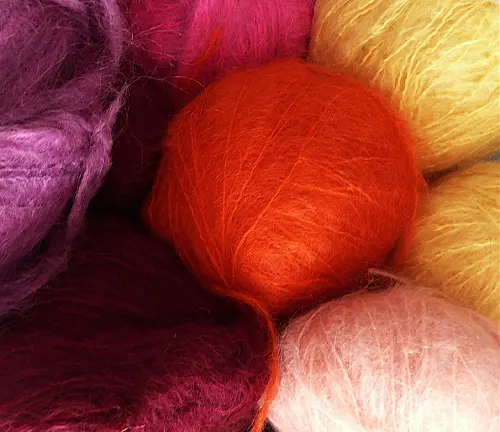

- Mohair Production: Angora Goats are primarily raised for the production of mohair, which is their soft and lustrous fleece. This natural fiber is highly sought after in the textile industry for its exceptional softness, sheen, and durability.
- Luxurious Textiles: Mohair from Angora Goats is used to create a wide range of luxurious textiles, including clothing, accessories, and upholstery. Its softness and natural luster make it a preferred choice for high-end fashion designers and manufacturers.
- Versatility: Mohair’s versatility allows it to be blended with other fibers like wool or silk to create unique and desirable textile blends. It enhances the qualities of these blends, making them even more luxurious and comfortable.
- Durability: Textiles made from mohair are known for their durability, resilience, and resistance to wrinkles and creases. This makes mohair products long-lasting and ideal for various applications.
- Natural Insulation: Mohair provides excellent insulation, keeping wearers warm in cold weather while remaining breathable and comfortable in warmer temperatures. This natural thermoregulation makes it a popular choice for all-season clothing.
- Renewable Resource: Angora Goats are shorn regularly to harvest their mohair, making it a sustainable and renewable resource. Proper care and ethical shearing practices ensure the well-being of the goats while maintaining the quality of their fleece.
- Contribution to High Fashion: The softness, sheen, and quality of mohair elevate it to the realm of high fashion. It is often featured in couture collections, luxury garments, and high-end accessories.
Sustainability and Angora Farming
Sustainability is a growing concern in the fashion industry, and Angora farming has been under scrutiny. Ethical and sustainable practices in raising Angora goats and harvesting their fleece are essential to ensure the well-being of these animals and protect their habitats.
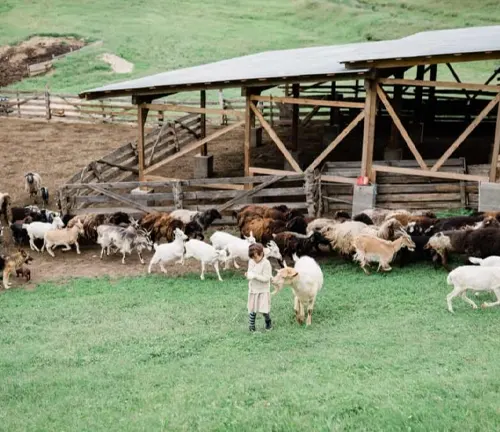
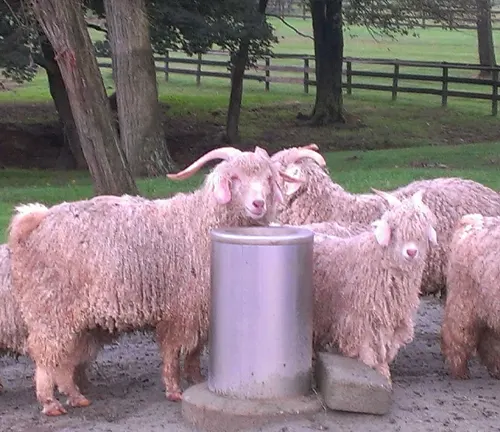
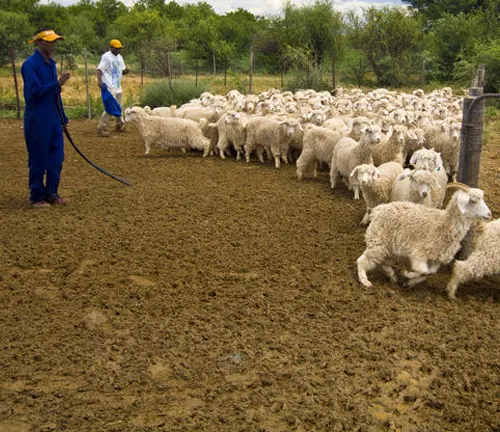
- Ethical Treatment of Goats: Ensuring the ethical and humane treatment of Angora Goats is paramount. Sustainable farming practices prioritize their well-being, including proper nutrition, shelter, and stress-free living conditions.
- Responsible Shearing: Sustainable Angora farming places great importance on responsible shearing practices. Gentle and non-harmful shearing methods are employed to prevent harm or distress to the goats.
- Environmental Stewardship: Sustainable farms implement environmentally friendly practices such as land and waste management, water conservation, and eco-friendly fiber production to reduce their ecological footprint.
- Genetic Diversity: Maintaining genetic diversity within Angora goat herds is crucial for their long-term health and resilience. Sustainable farms prioritize diverse breeding programs to avoid genetic bottlenecks.
- Consumer Education: Sustainability efforts are reinforced through consumer education, helping buyers make informed choices and support farms that adhere to ethical and sustainable practices.
Different Species
Turkish Angora Goat
This species is known for its exceptionally fine and luxurious fleece. Turkish Angora goats produce some of the softest mohair fibers in the world. They have been selectively bred for generations to enhance the quality of their fleece, making them highly prized in the textile industry.
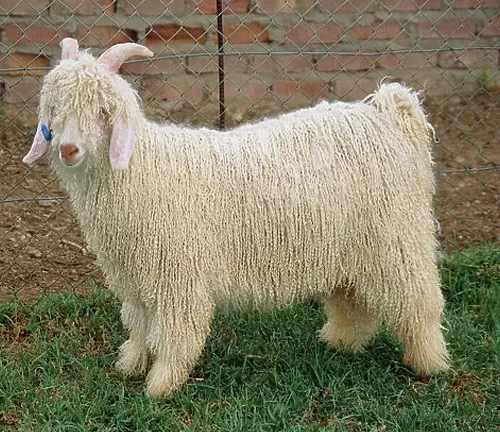
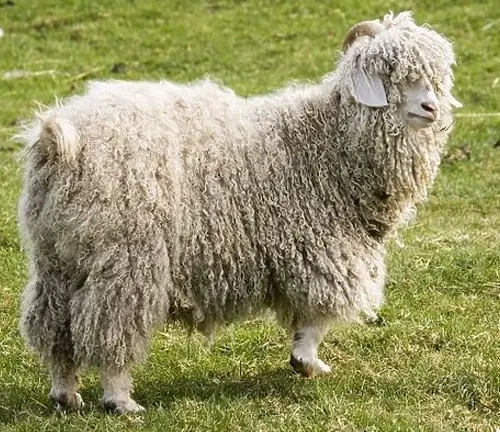
South African Angora Goat
The South African Angora goat is recognized for its high fleece production. While their fleece may not be as fine as that of the Turkish Angora, they make up for it in quantity. These goats have played a significant role in supplying mohair for various commercial applications.
Frequently Asked Questions (FAQs)
- What is an Angora Goat?
An Angora Goat is a breed of domesticated goat known for its soft and lustrous fleece, called mohair. They are raised primarily for the production of this valuable fiber. - Where do Angora Goats originate from?
Angora Goats originate from the Ankara region of Turkey, historically known as Angora. They have a rich history dating back to ancient times. - What are the primary uses of Angora Goats?
The primary use of Angora Goats is for the production of mohair, which is used to make luxurious clothing, accessories, and textiles. - What is mohair, and how is it different from wool?
Mohair is the soft and silky fleece obtained from Angora Goats. It differs from wool as it is smoother, has a higher sheen, and is considered one of the softest natural fibers in the world. - How long does the fleece of an Angora Goat grow?
The fleece of an Angora Goat can grow continuously, and it is typically sheared every six months to maintain its quality. - What are the different color variations in Angora Goat fleece?
Angora Goat fleece comes in various color variations, including white, gray, and shades of brown. - What are the main differences between Turkish and South African Angora Goats?
Turkish Angora Goats are known for their exceptionally fine fleece, while South African Angora Goats are recognized for their higher fleece production. - How often should Angora Goats be sheared?
Angora Goats should be sheared every six months to keep their fleece in optimal condition. - What is the average lifespan of an Angora Goat?
The average lifespan of an Angora Goat is typically 10 to 12 years, but with proper care, they can live longer. - What kind of climate is suitable for Angora Goat farming?
Angora Goats thrive in temperate climates with moderate rainfall and access to shelter during extreme weather conditions. - What are the nutritional requirements for Angora Goats?
Angora Goats require a balanced diet rich in fiber, protein, vitamins, and minerals. Pasture grazing and supplemental feeding are common practices. - Are Angora Goats easy to raise for beginners?
Angora Goats can be challenging to raise for beginners due to their specific care requirements, especially in terms of fleece maintenance. - Do Angora Goats have any specific health concerns?
Angora Goats are susceptible to health issues like internal parasites, foot rot, and nutritional disorders, so regular veterinary care is essential. - How can I get started with Angora Goat farming?
Starting with Angora Goat farming involves acquiring the necessary knowledge, resources, and suitable breeding stock. Consult with experienced farmers and conduct thorough research. - What are the ethical considerations in Angora Goat farming?
Ethical Angora Goat farming emphasizes humane treatment, responsible shearing practices, and sustainable management to ensure the well-being of the animals and their environment.





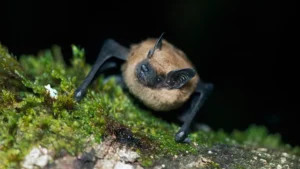

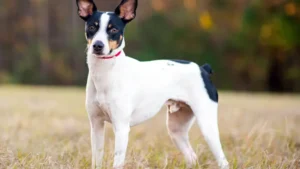
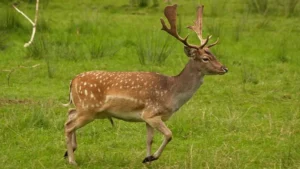
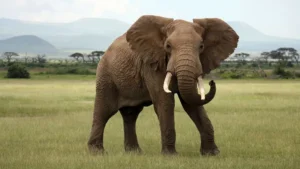
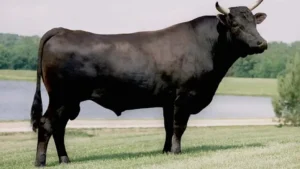
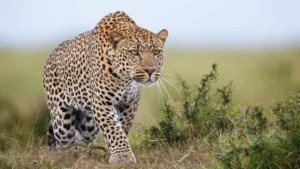

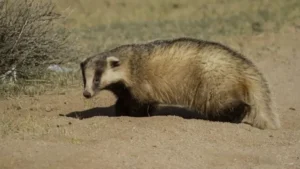
Leave your comment